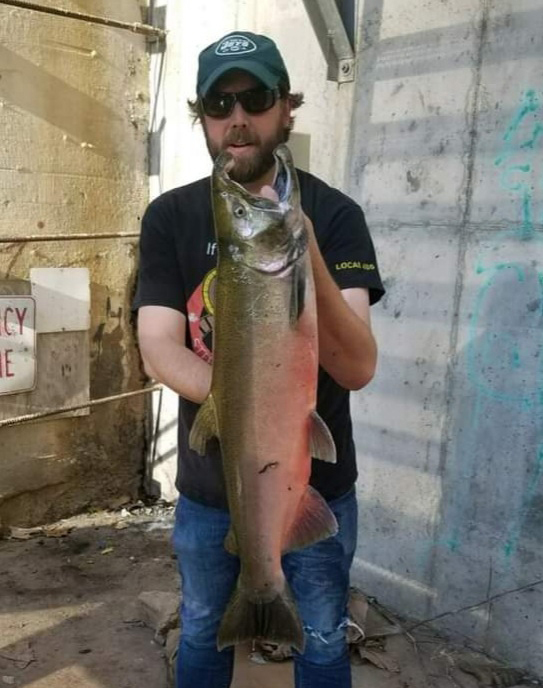The King of Lake Ontario

Come fall, anglers journey from all over the northeast to Lake Ontario’s south shore to try to hook-up with a king salmon…the hardest fighting fish in freshwater. Lake Ontario has some of the best king (chinook) salmon fishing in the country, and this time of year, the average angler has a legitimate shot at catching a 20-pound fish. These salmon spend most of their summer out in the bowels of Lake Ontario, where only the big boats with huge dollars in electronics and other gear can catch them consistently. But come September, these coveted fish migrate into the shallows and can be caught from a pier or jetty at the mouth of most Lake Ontario tributaries. This is the time of year when the average angler with a decent rod and reel can catch a fish of a lifetime with no boat.
These mature kings are returning to the tributaries where they were stocked. Although some spawning does occur near river mouths, most spawning takes place in upstream sections of rivers or streams. Non-natives to New York State, chinooks (kings) were first stocked into the Great Lakes in 1873. Although they were sporadically stocked throughout the years, it was not until about 20 years ago that they became abundant. At that time, New York State aggressively stocked kings into Lakes Erie and Ontario to provide a sport fishery. Using the tremendous population of alewives at that time as a food source, chinooks thrived and produced a spectacular fishery. The fact that these stocked salmon have a very low success rate when spawning is kept on the down-low by the DEC, and each year’s salmon die-off needs to be replenished by the state, or the fishery will weaken quickly.
September normally marks the arrival of the earliest run of fish, and peak runs occur in October. Spawning is completed by early November, and the adult salmon die shortly thereafter.
When fishing off the piers or from shore at the mouth of a tributary, casting glow spoons and J-plugs are a good choice. First and last light is usually the best time to cast for salmon, and there are even a few hardcore anglers who fish after dark. Be prepared to do a lot of casting, and don’t be afraid to change things up – retrieve speed, lure colors. Then as October rolls around, the salmon are caught up the rivers where the angling techniques change. In the river, salmon egg sacs, flashy spoons, or deep diving plugs are effective.
Then in the lower river, egg sacs and other egg imitations, including artificial flies, are best, especially in faster upstream water areas.
Major Lake Ontario tributaries having kings runs include the Salmon River, Oswego River, Genesee River, Oak Orchard Creek, and Eighteen Mile Creek.
As the kings end their migration to spawn, their skin color darkens to a green olive color and eventually will become dark brown. Once these salmon turn green, their meat gets soft and is not good table fare. Some people smoke them with decent results, but you will be sadly disappointed if you are expecting the same tasty salmon you get at the grocery store. The old joke about the best recipe being to bake the salmon for two hours on a roasting board then throw out the salmon and eat the board holds true here.
Still, the fact that these fish are so big and fight so hard makes fishing for them worth the effort. Even though these fish are dying, the females’ eggs are much coveted as experienced anglers place these eggs in tiny mesh bags. These egg sacks are excellent bait for trout and salmon when drift fishing them under a float.
If you don’t feel confident enough to fish for salmon on your own, I suggest you contact charter captain Jeremy Sage at JD Custom Charters. Jeremy is a veteran salmon guide, and he will see you get a private meeting with the King.
We have all this great salmon fishing right here on our shores, yet many local anglers still haven’t attempted fall fishing. Maybe 2020 is the year to give it a try.



